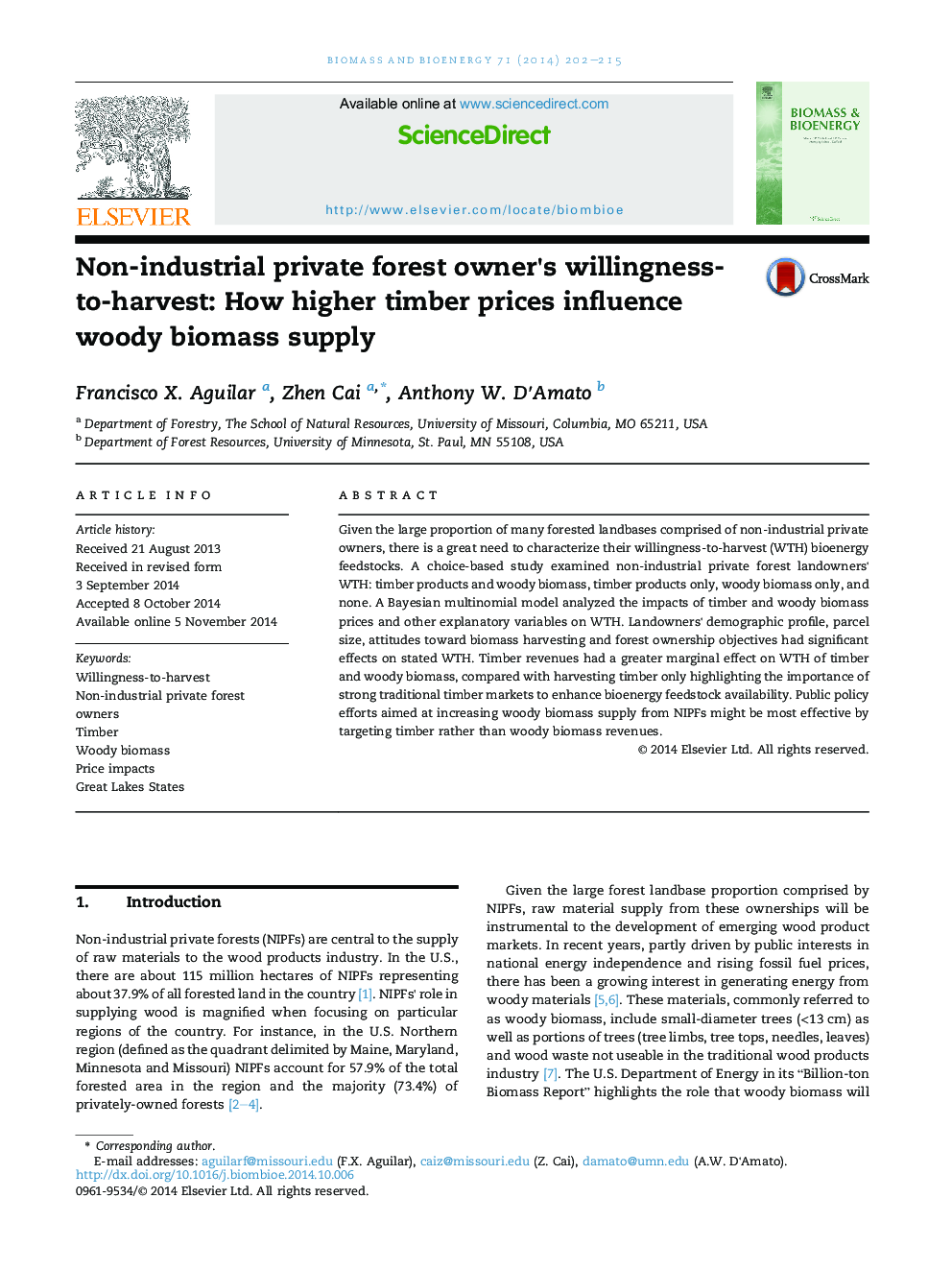| Article ID | Journal | Published Year | Pages | File Type |
|---|---|---|---|---|
| 676818 | Biomass and Bioenergy | 2014 | 14 Pages |
•Timber prices are the most important factor behind NIPF owners' stated WTH woody biomass.•Biomass prices showed lower impact than timber prices influencing WTH woody biomass.•To increase woody biomass supply, public tools should target timber rather than biomass revenues.
Given the large proportion of many forested landbases comprised of non-industrial private owners, there is a great need to characterize their willingness-to-harvest (WTH) bioenergy feedstocks. A choice-based study examined non-industrial private forest landowners' WTH: timber products and woody biomass, timber products only, woody biomass only, and none. A Bayesian multinomial model analyzed the impacts of timber and woody biomass prices and other explanatory variables on WTH. Landowners' demographic profile, parcel size, attitudes toward biomass harvesting and forest ownership objectives had significant effects on stated WTH. Timber revenues had a greater marginal effect on WTH of timber and woody biomass, compared with harvesting timber only highlighting the importance of strong traditional timber markets to enhance bioenergy feedstock availability. Public policy efforts aimed at increasing woody biomass supply from NIPFs might be most effective by targeting timber rather than woody biomass revenues.
